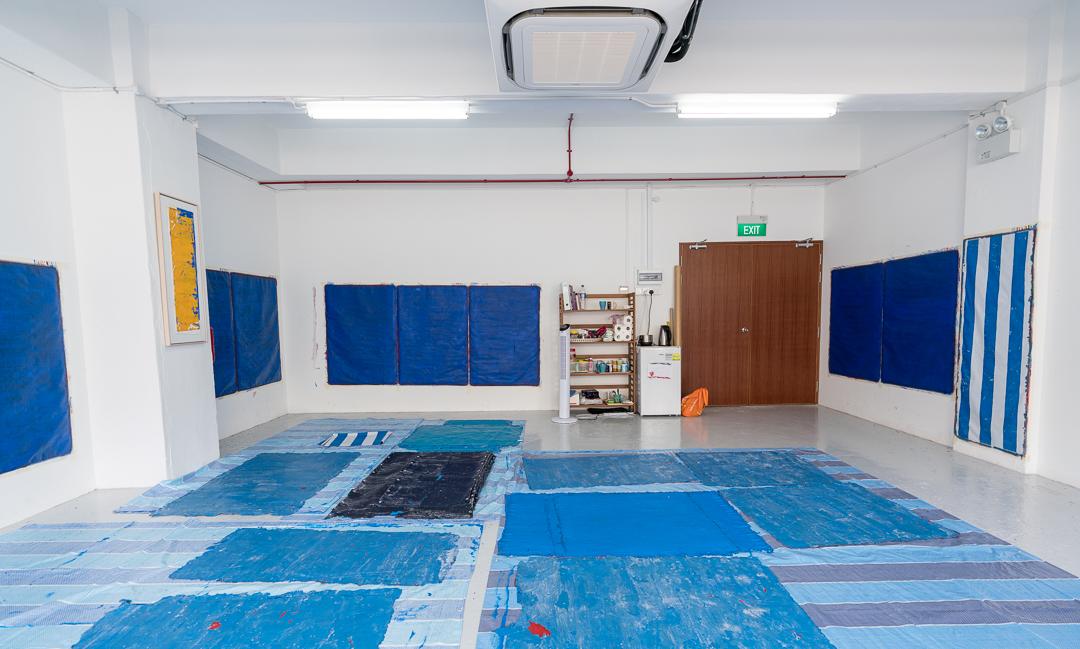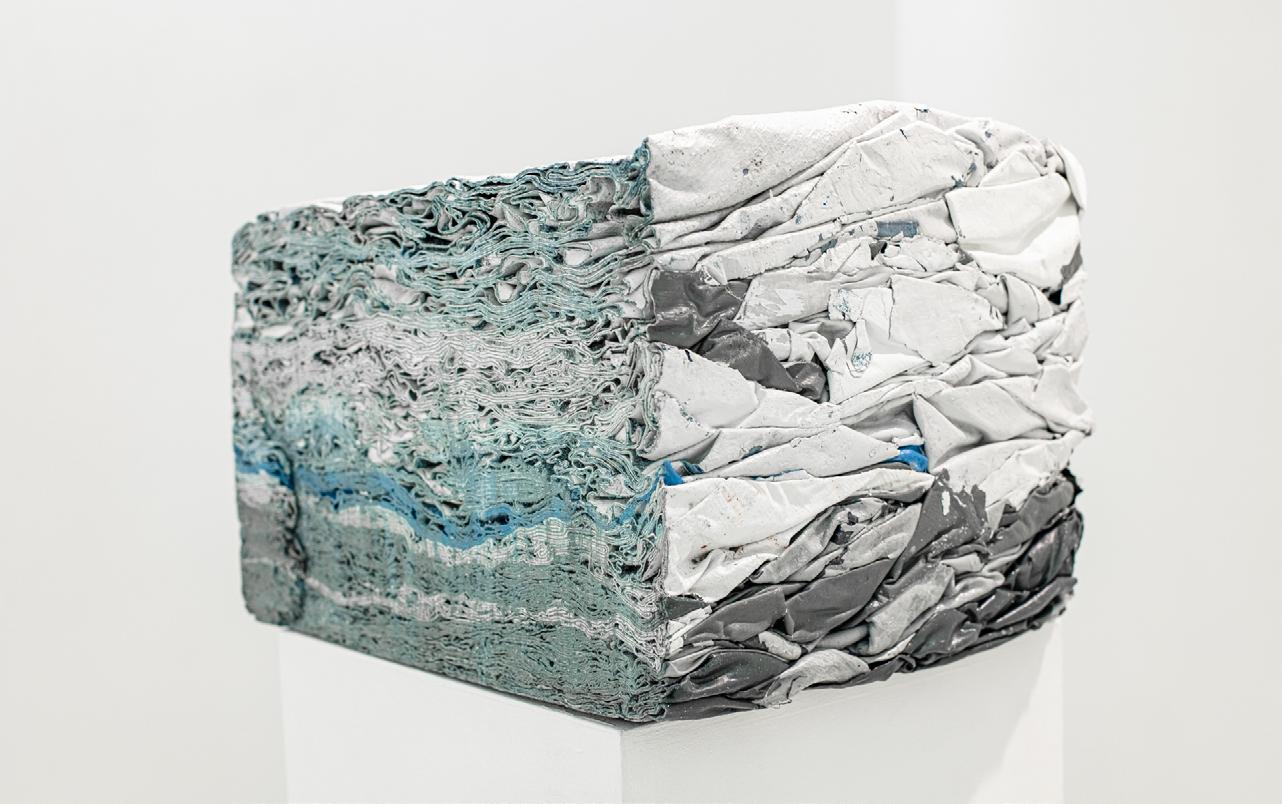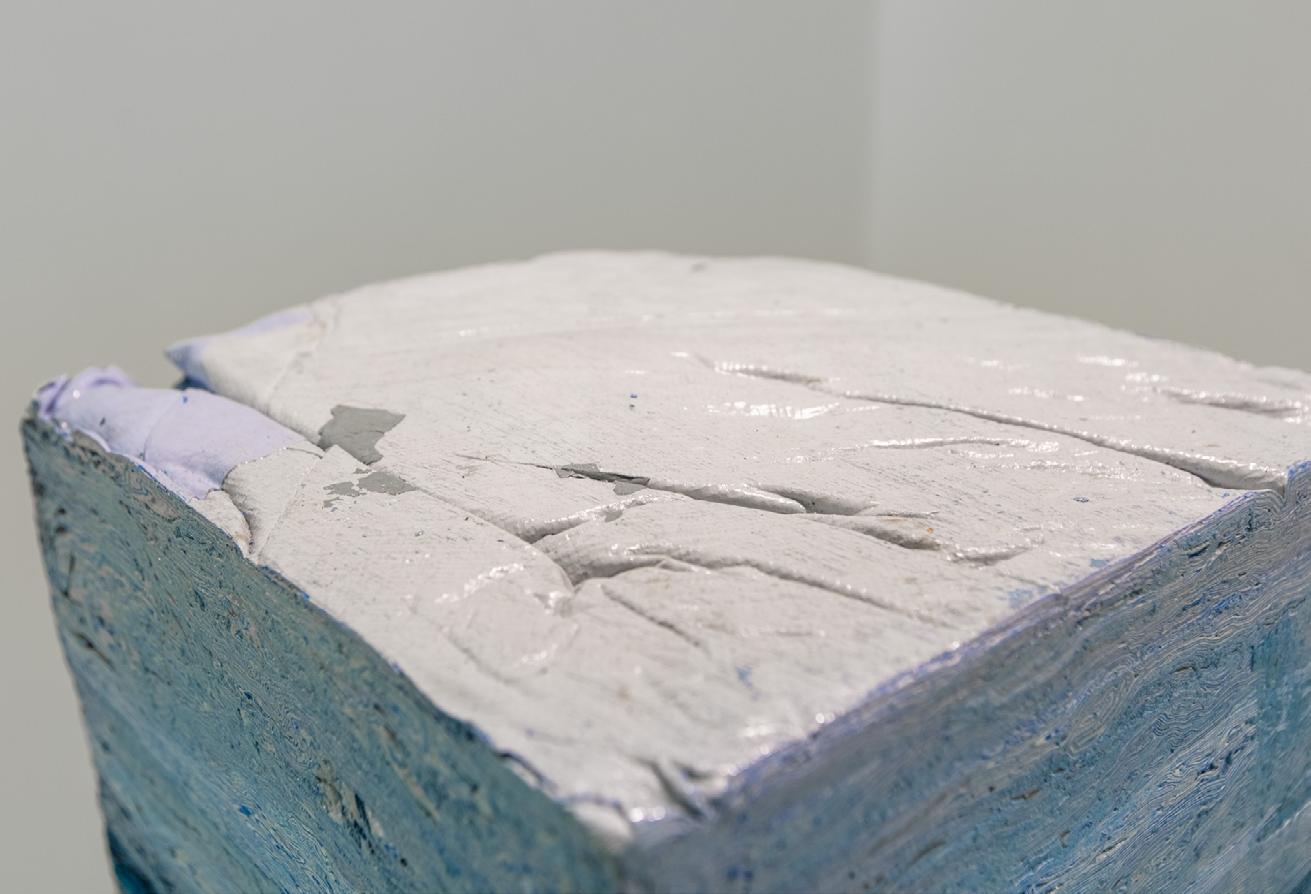
7 minute read
KANCHANA GUPTA
458.32 SQUARE METERS
Curated by Savita Apte
Advertisement

Artist Statement
In Conversation with Elaine Chew
458.32 Square Meters: Frayed, Fragmented and Fabricated
Artworks
Biography
Curriculum Vitae
Kanchana Gupta 458.32 Square Meters
12 October—10 November 2019 Sullivan+Strumpf Singapore 5 Lock Road #01-06 108933
www.sullivanstrumpf.com
I am hugely inspired by the artist Cornelia Parker, who harnesses the potentiality of materials to speak about a diverse range of subjects. In my work I strive to employ the same simplicity of form and focus on essentials. Although I do not aim to be Minimalist, the ideology of Minimalism undoubtedly continues to influence the aesthetics and spatial language of my practice.
My practice yokes process with materiality and this is the structure and impetus behind all my works. The materials which inhabit my work range from oil paint and canvas to socially weighted everyday substances such as vermillion powder, henna, silk, sandalwood powder and stretch to urban construction materials like jute and tarpaulin. Each material brings with it its own particular identity, social symbology, weave, texture, structure and colour, which I leverage using a combination of studio and industrial processes often irreversibly altering the inherent properties and contexts.
My studio process is both reflective and meditative, developed through repetitive actions such as layering, tearing, burning, peeling, stacking, folding, bundling, heaping, arranging, compressing and cleaving. These actions and the art works themselves may be read as metaphors for the concealment and revelations, of accumulated experiences as well as an ongoing social commentary on the condition of labour.
Each work leads to a series of investigations and each series becomes the foundation for the next. For example, my series Traces and Residues built on the deliberations of Fragments and Residues and became a process of contemplation about the psychological aspects of disconnecting and the marks/ bruises and the resultant fracturing and fragmentation that ensue. I expanded both the psychological notions and process into a secondary social narrative in the series Works-InProgress and Edges and Residues manipulating the materiality of oil paint and process of peeling with urban social materials like tarpaulin and jute, to allude to the problems of urbanisation with its emphasis on construction, migration and a resultant compression.
My latest series Compressed@..., Compressed Slabs and Compressed and Cut have explored the use of large volumes of paint and substructure. Extrapolating various studio and industrial processes, I produce sculptural pieces that better articulate my experience of rapid urban growth in the environments which I inhabit. Although solid in their structure, these works are far more intimate in nature, exposing a personal geology of lived experience.
To me, compression encapsulates the pattern, rhythm and colour that is unique to urban spaces, industrial materials and labour processes. In these works, the idea of compression is used not only to force a material into a pre-determined mould/space but also to transform it into acquiring a different shape, form and eventually a different identity. This notion of transformation and compression is embedded not only in the process of making my works but also in the works themselves.
Throughout my practice colour has remained a vital component both as an expressive means to create visual sensations as well as a symbolic arbiter of a unified language. Thus each series is often confined to its own predetermined colour palette.
In addition, literature and cinema in various languages and from around the world continue to be major influences in my life and my work. I incorporated film as a medium in my site specific installation work, Two Tales and a City and my current series of works are videos, which dissect the narrative of sexualised presentations of the female body in commercial Indian cinema of the 1980s and 90s, a series that is deeply personal and intimate—part personal memory and part social commentary.

KG: The heaviest of these works is approximately 40 kg. My process is labour intensive from beginning to end. It starts with a daily ritual of layering oil paint vertically on approximately 60 square meters of surface area for 5 to 6 weeks to accumulate 25 to 30 layers of paint. Once all the layers are fully dry, I start the process of tearing, using heat and various types of knives, which requires me to work with various heat emanating devices (used in construction and furniture industries) while standing for hours. Then comes the affixing of many sheets horizontally for those that are more like paintings. As mentioned, sculptures are made in a factory through the process of compression. Once compressed, I cleave these dense works manually using a fine saw and it takes 30 to 40 hours to cleave just one. It’s a very slow and deliberate process as the material is very dense and cohesive to penetrate and cut through. As physically exhausting as it is, it is also quite rhythmic and meditative, which I enjoy. This kind of physical involvement not only lends a certain tactility to my works but it also creates a kind of intimacy between the works and I. I watch them evolve slowly over months and each work carries some sort of remnant of the artist’s body and hands, in the form of imperfect cutting line or asymmetric edges of paintings, as well as the sweat and toil of making them. This intimacy and the psychological process with each of my works is important to me.
EC: That’s really interesting: indeed, the results function as metonyms of the alienation of labour. I am drawn as well to your incorporation of social materials such as jute and tarpaulin. Why jute and tarpaulin specifically? Do they act as signifiers for you?
KG: A few years ago, I took up studio space in an industrial area near Ubi and began taking walks around the neighbourhood, encountering and striking up conversations with migrant workers living in a dormitory next door and other people working in small scale industries. These, and many other conversations with people from different strata, as well as my own experience of a highly urbanised life for more than 25 years made me think of the physical, mental, social and emotional compressions associated with such environments. I began observing the various industrial processes being carried out in the vicinity, from welding, compressing, soldering to metal work, wood work, scrap recycling, fabricating etc. Being intrigued by these processes and materials I kept encountering, such as tarpaulin, jute, cement, steel, wood, prefabricated slabs etc., I decided to combine studio
reiteration. Exploring the strata and sub strata reveals an inner world that is enriched by references to philosophy, literature, film and personal experience all of which allow Gupta to discover, internalize and translate new methodologies of communication
Formally, these three-dimensional objects are the largest the artist has attempted. Restrained in size, not out of artistic desire, or paucity of material, but by the dimensions of the industrial machine used to apply external pressure to the moulds and by the size and material of the moulds themselves.
The exposed strata chart a movement in Gupta’s work marked by social realities which in itself permits a redefinition of previously held preconceptions of private and public spaces and a deliberation on the rhythms of physical and virtual space, as well as rural and urban space. Whereas, in rural areas, spaces are constructed to fit people, Gupta’s work suggests that in hyper urbanisation, people are constructed to fit spaces - to fit a pre-determined mould. Compression confers not only the pattern and colour but also infers the urgencies that are unique to urban spaces. In sharp contrast to Compressed Slab and Edges and Residues, the exposed facets of the Compressed and Cut sculptural objects are opulently communicative and replete with clandestine subtexts, which the artist herself is often unaware of and almost always denies. For Gupta, the emphasis is on art as a place making activity. Above all Gupta’s art, is a matter of constructing a relationship between herself and the world she inhabits. So, it is only natural that it is her art that moves her from the isolation of the studio and its processes, to a domain of connection with the community. Contrary to the appearance of outward perfection, Gupta’s sculptural practice is crafted to disrupt the certitudes of life and art. Although the work itself is meticulous and an evocation of inherent potential, it does not offer up any neat explanations or trite resolutions.

Drawing from her own disparate interests and fields of knowledge Gupta exploits her fascination with the transformative function, through the paradoxical combination of a worldly perspective and a singular vision. Seen against this backdrop, the Compressed Slab as well as the Compressed and Cut sculptures should be read as artefacts of transformation, monuments that commemorate a constitutive feature of Gupta’s practice - a simultaneous awareness of the particular and the universal. Embedded in Gupta’s work is the understanding that knowledge is produced as much through



